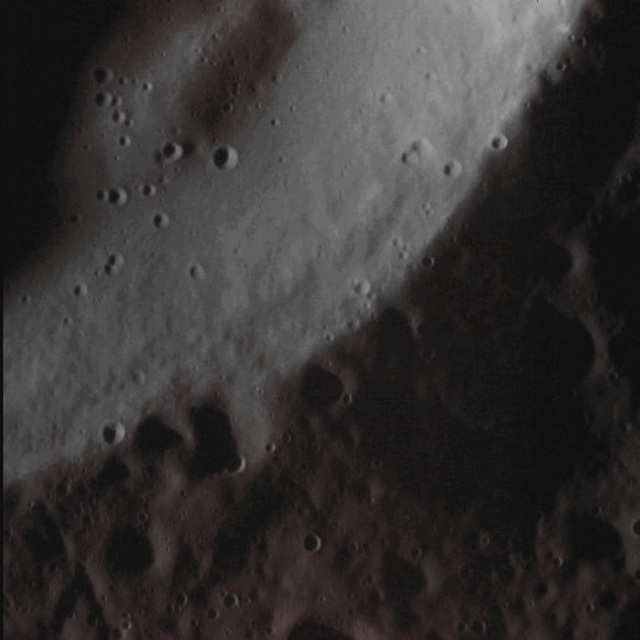
November 9, 2014
Credits: NASA/Johns Hopkins University Applied Physics Laboratory/Carnegie Institution of Washington and Dr Paolo C. Fienga/LXTT/IPF for the additional process. and color.
|
The NASA - MESSENGER Spacecraft continues to image the Surface of Mercury at ever Higher Resolutions. In this view (approx. 5,3 Km - such as about 3,29 miles - across), that was obtained on September, 15, 2014, we can see the South/Eastern Rim of the Bechet impact crater, located in Mercury's Northern Volcanic Plains. Bechet Crater is roughly 17,6 Km (such as about 11,115 miles) in diameter. At this Resolution (about 10 meters per pixel), the relatively smooth Texture of the Crater's Inner Wall is clearly visible. This specific Texture is distinct from the one of the Crater's Floor, and such a circumstance might be due to the occurrence, some time in a distant past, of a phenomenon known as "Down-Slope Creeping" of Wall Material (---> such as Dust and Rocks which went Downslope gradually and almost imperceptibly). There also appears to be a subtle change in the Slope located along the Wall, which could be the sign of an incipient (---> imminent) Slump. Date acquired: September, 15th, 2014 This picture (which an Original NASA - MESSENGER Spacecraft's b/w and NON Map-Projected image published on the NASA - Planetary Photojournal with the ID n. PIA 18944) has been additionally processed, contrast enhanced, Gamma corrected, magnified to aid the visibility of the details and then colorized in Absolute Natural Colors (such as the colors that a human eye would actually perceive if someone were onboard the NASA - MESSENGER Spacecraft and then looked outside, towards the Surface of Mercury), by using an original technique created - and, in time, dramatically improved - by the Lunar Explorer Italia Team. Different colors, as well as different shades of the same color, mean, among other things, the existence of different Elements (Minerals) present on the Surface of Mercury, each having a different Albedo (---> Reflectivity) and Chemical Composition. |
News visualized: 686 times

